PART.2
Excavation
The Cosma complex holds great interest for Munro, not only because of its buried structures and artifacts, but because of what it could mean for a better understanding of ancient Peruvian lifestyles and sociocultural dynamics. “Cosma is located in an ecological region which has largely been ignored by researchers,” Munro says. “When people have looked at highland-coastal interactions, they typically have focused on either end of the spectrum, either by studying coastal sites or sites located within high altitude basins.” The Cosma sites, because of their location in the upper reaches of the coastal river valley, could offer a glimpse into ancient inter-regional interactions that many other sites could not afford. Teaming up with Lic. Jeisen Navarro, a professional Peruvian archaeologist and co-director of the new project, and Dr. David Chicoine of Louisiana State University, Munro began the first excavation season in earnest during the summer of 2014.
It was not easy.
“Cosma is just physically hard to get to,” said Munro. “There is no public transportation, so organizing the logistics of field work and arranging to get supplies and the crew up to the site was a challenge.” Initial access and then going from one location to another within the area of investigation meant negotiating steep mountainous terrain. The excavation sites were overgrown with cacti and bushes, which, at first, would not be an unusual condition for an archaeological site. But this team was small. They needed help from the local community. The villagers warmly obliged, and it cut the initial clearing operation time from perhaps several weeks to only one.
Once they had the clearing behind them, the team began cleaning off architecture that had been previously exposed at the Karecoto and Ashipucoto mounds by looters’ pits. This gave clues about each of the mounds’ architectural elements and where the excavators could set their first test pits and excavation units. Three test pits and five full excavation units were opened up at Karecoto. Later, they were also able to open up one excavation unit at Ashipucoto.
“The main purpose of the first season was to establish a site chronology,” Munro continued. “We wanted to see the dates of the ceremonial mounds and whether they were utilized or built contemporaneously, or if they were each built and occupied during different time periods. We also wanted to get a good understanding of the spatial and architectural elements of the mounds in order to better understand the complexity of the site. We spent a good deal of time mapping with a total station, and hiking around the area/hillsides to GPS the architecture and tombs which we couldn’t reach with a total station."
As excavation progressed, the picture of the mounds began to emerge, along with a few surprises. They found that the underground gallery at Karecoto, the big mound, features stairs leading down into the gallery opening. The top-most portion or phase of the mound was apparently constructed as a circular platform and wall. Within the mound was evidence of another, smaller, circular wall. As test pit results showed, it appeared that the circular platform and the built-up general platform upon which it was constructed were both contemporaneous, having been built and utilized during the same time period. The overall structure of Karecoto ws beginning to come into focus. As co-director Navarro-Vega described it: "Think of Karecoto like a cake resting on a table, and there are three different levels total. The first is the long built-up platform, which measures 250 meters in length but only a few meters high. That could be compared to the "table" the cake is resting on. Then there is the built-up mound proper, which at its peak is 18 meters in height. This is a two-tiered cake. The bottom level is wider, and fatter, and could serve more people. The top level is the small circular platform we recorded and where the underground gallery is located."
But perhaps the biggest developments came at Ashipucoto. Here, the team uncovered a large circular room with a diameter of about 6 meters. “The architecture was spectacular, with smoothed/worked stones comprising a wall that was over 7ft high,” said Munro. “We also discovered intrusive tombs from the Late Intermediate Period (1100- 1470 CE) dug into the mound construction—which was originally constructed much earlier—during at least the Early Horizon (900-200 BCE).” The excavators found that the room appeared to have been purposely filled with small rocks and then covered with a hard compact clay fill. “Not a single artifact was found in our excavations of the room fill, so it's possible this was an area which was ritually cleaned before the room was sealed off," continued Munro. “The intrusive burials on Ashipucoto are also intriguing since they illustrate the continuous occupation at the site over millennia.” Associated with the burials were fineware vessels like Chimú pottery and face-neck vessel jars, objects thought to originate from coastal areas. The Chimú culture arose around 900 CE and influenced Nepeña from about 1100 to 1470 CE (the Late Intermediate Period). More broadly, the Chimu Empire conquered the central and north coast of Peru between the Pacific and the western slopes of the Andes. Said Munro, “this is different from Karecoto, where it appears that at least on the mound proper, activity and use stopped by the Early Horizon” as much as a millennium before.
Another major find: The three mounds, Karecoto, Ashipucoto, and Kunka, appear to be aligned in a north-south direction. Although they already suspected this based on satellite imagery and images from the 2013 survey, on-the-ground mapping during the first full excavation season confirmed it. “The line is just 3 degrees west of a N-S axis,” Munro stated. What was the significance of this alignment to the ancient Cosmenos, the people of Cosma who lived here so long ago? The question will no doubt anchor further research.
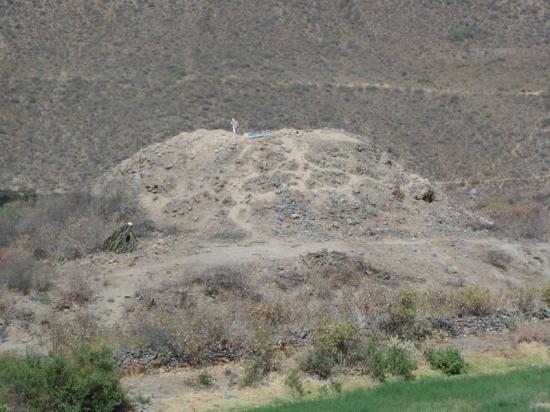
Profile view of the main mound of Karecoto. Photo credit Kimberly Munro.

Field crew excavating on Karecoto. Note vegetation overgrown on Kareocoto platform. Photo credit Kimberly Munro.
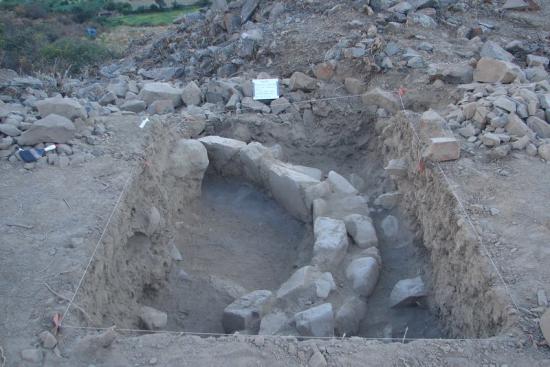
The interior wall/room excavated on Karecoto. Photo credit Kimberly Munro.
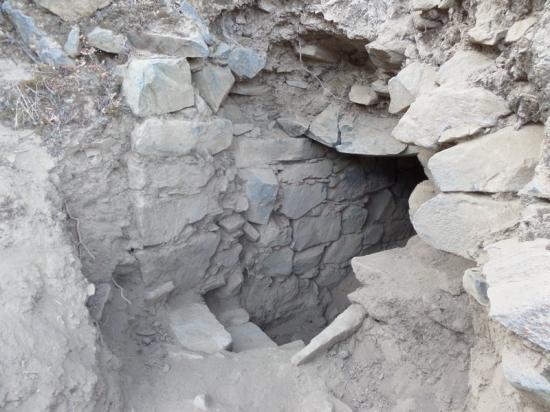
Stairway leading into gallery within Karecoto. Photo credit Kimberly Munro.
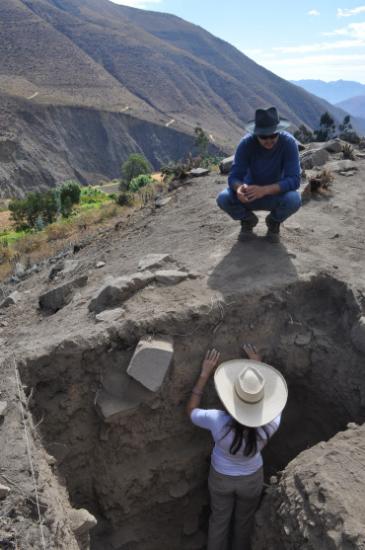
Prepared floors in the profile of a test pit. Courtesy Cosma Archaeological Project.
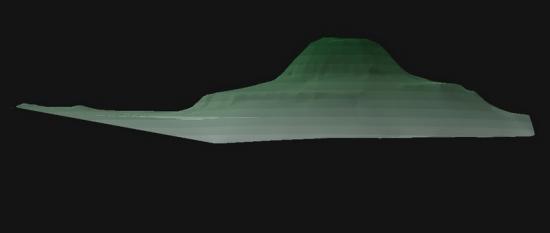
3D imaging of Karecoto made from total station points collected during the 2014 season.Courtesy Kimberly Munro and the Cosma Archaeological Project.
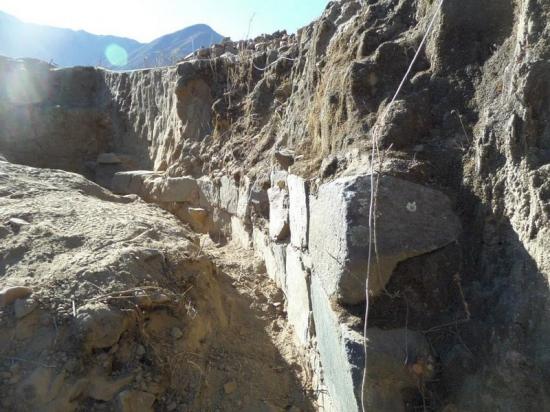
Wall of the circular room within Ashipucoto revealed. Photo credit Kimberly Munro.
PART.3